I had heard about the use of 3D printing to produce rapid prototypes for aerodynamic testing, but when Ping said they were using 3D printing to produce finished golf club heads I had to investigate.
So at the 2015 PGA Merchandise Show in Orlando I met with fellow Briton Paul Wood, Ping's Director of Engineering to find out more about Ping My 3D.
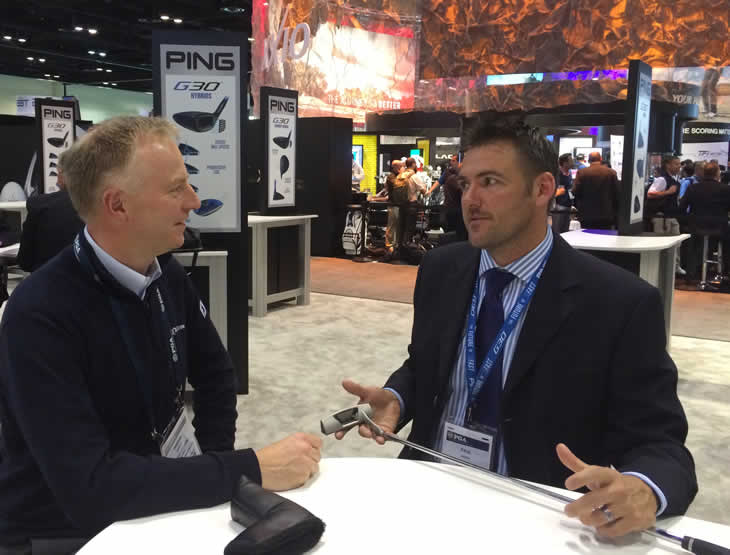
Hi Paul. Can you explain how the interest in 3D printing for Ping came about?
One of our relatively recent hires has a PhD in Materials and he really has his finger on the pulse in this area. His PhD was in a type of metal that has very interesting mechanical properties. He is a tinkerer and he actually owns his own desktop 3D printer, a Makerbot, which is a type of plastic 3D printer that is aimed at regular members of the public.
He was convinced that the area of 3D printing was going to be huge and that we needed to investigate it so I said, “fine let’s go and build something”. Maybe we were a bit early because there weren't many people doing that back then, but we had been watching it and doing stuff on it so we decided to find someone who could make a product with a 3D metal printer and try it out.
It is brand new technology and such a fast marketplace right now. There are three different companies, all European interestingly enough, two in Germany and one in France, that make these printers and the technology is just in its infancy.
We can lay down the layer of metal and the lasers are good enough now to weld one layer to another and make a bond that has good structural integrity, so my colleague came to me and said that we could do this, we could put a contract in place and we could make a product.
So I asked what kind of material properties are we going to get, is it at least somewhat close to a cast product and he said, "no it is actually better, you actually get a stronger product" and that really blew my mind.
The 3D printer does such a good job in welding the metals that you get the micro-structure that you need to produce a stronger product.
When you say welded do you meant that each layer that goes down gets welded together?
Every 1/1000th of an inch is welded to the previous 1/1000th of an inch and normally when you are making a product you do a lot of welding, for example in our products we weld the face of the driver to the body of the driver. You normally think of the weld line as being where something breaks because you are taking two bits of strong metal and you are welding them together and that is the weak point.
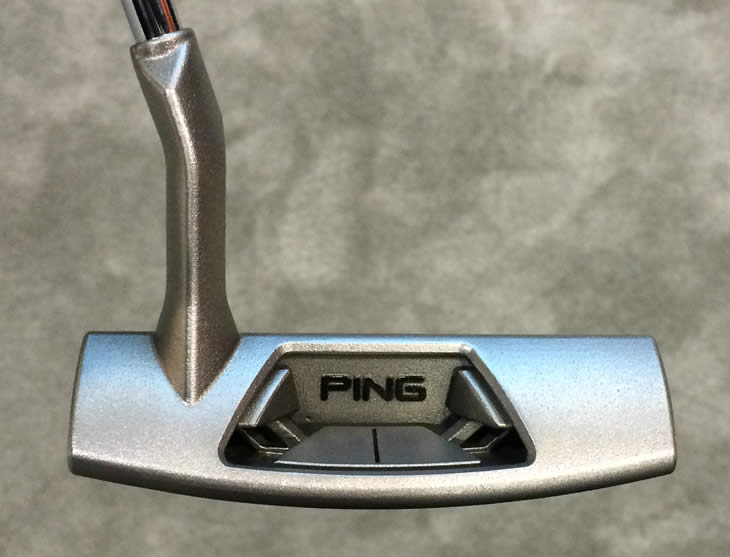
But this whole product is welded so you think it can’t be as strong, but it is because it is to do with the micro weld and through material testing it has proved to be stronger than the cast equivalent.
The very first product we made with the 3D printer was a G25 iron, we made the product and tested it and a lot of our players couldn’t tell the difference between the 3D printed product and the cast product, that’s how good quality it was.
So that gave us the confidence to think that we could do this and from there it has been a really quick road and this product is the very first 3D printed putter we finished and it came out and it was good enough to bring here and show. This isn’t iteration number 17 this is iteration number 1.

I would agree that the feel is as good as a current Ping putter. Has this one been finished in any way or is that how it comes out of the printer?
It comes out with a slight roughness to it so we give it a light blast to tidy it up a little bit, but that is all. It has a distinctive look when it comes out of the machine, with some very fine stripes as a result of the laser going back and forth, which we think is a cool look and we wouldn't want to lose those, but you want to take out a little bit of roughness here and there so that is dealt with.
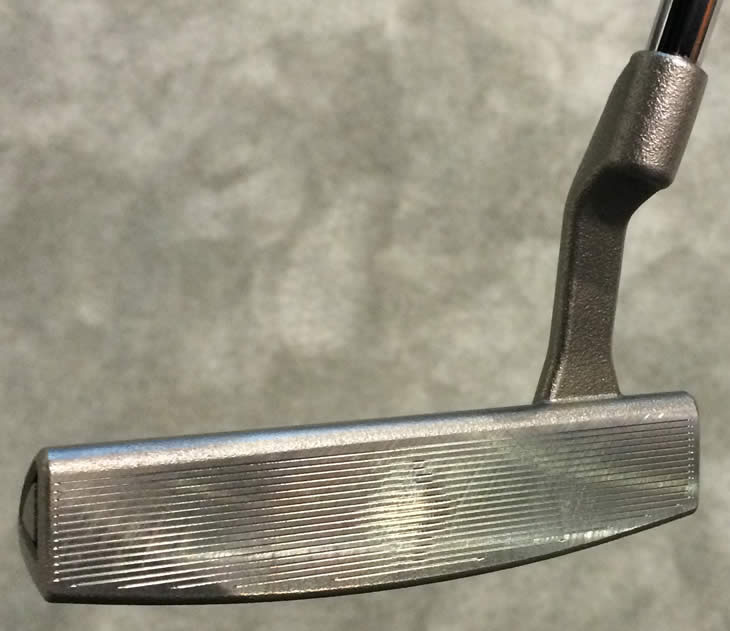
Could somebody go to Ping and get a putter printied right now? I imagine quite a lot of money might have to change hands?
Right now we are finalising the details. The plan is we are going to have a VIP experience as this isn’t something we are ready to use across our broader range of products. This is a high end program for a select number of products a year as we keep working on the R&D and pushing the boundaries of what we can do.
So the idea now is to provide a VIP fitting experience where you sit down with a club designer, take one of our models and work out how we tune that product for you. It isn’t a blank piece of paper where we let somebody design a putter from scratch, but we will take the design and customise it based on the fitting they have and what the player wants and customise that putter exactly for them so what they get is a one of a kind product that is unlike any other putter.
That is the beauty of the 3D printer. It doesn’t care what you send it. It doesn’t care if it is the same product as last time or totally new, so every product can be unique.
So I believe the price could be in the £5000-6000 range?
I think that is around what we are thinking. Obviously we would need to talk to the marketing guys on exactly what it ends up being, but that is kind of the ballpark of where we are.
This is a new technology and like all new technologies it is expensive when it first comes out. As more companies start working out how to make these machines better, as they make more machines and the machines become cheaper, at some point this will be mass market but it is not that now.
It might be there in 5 years or it might be there in 10 years. This is the chance to be one of the very first to get a product using this new technology.
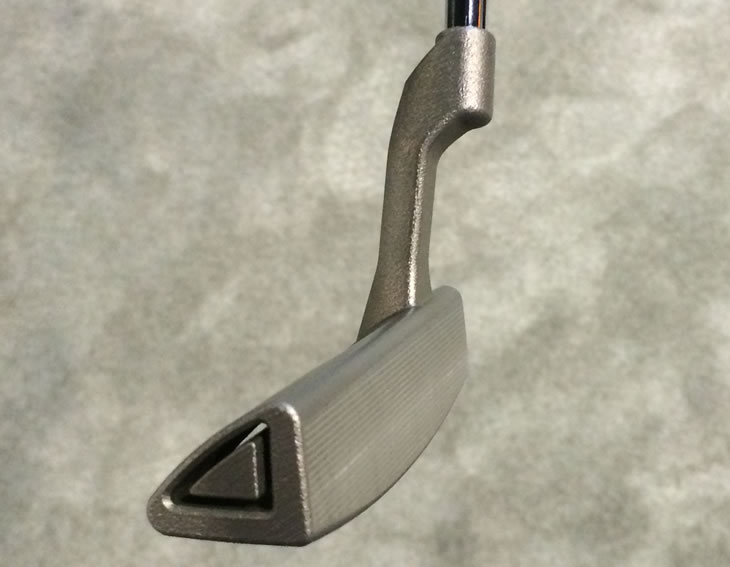
You talk about the time-scale, how long do you think it will be before there are as many metal 3D printers available as for example there are 3D plastic printers now?
I think we need to get to the point where there are enough people using the machines to that the companies who make them are making hundreds of thousands of machines a year so that economies of scale leading to the price coming down so it is hard to put a time-scale on that.
How much do these machines cost at the moment?
These metal 3D printers are nearly $1 million, so they are not cheap machines at all right now.
And then there is the cost of the material on top of that?
With the material it depends what you use. One of the great things about this is that you can 3D print any material that you can get in a powder form, so we can easily use 17-4 stainless steel. At this point the biggest cost isn't in the materials but in the technology.
One day it may get to the point where the materials are a significant part of the cost, but that would be the point where we know we are in the mass market.
Have you given any thought to the process that customers might go through if they wanted to buy one of these putters?
We envisage that the way we fit our tour players would be the same way that we see this going. We have our lab in Phoenix and we have iPing app and some other technology, but iPing is still the centrepiece and gives us the information about the stroke and that is what dials in the weight of the putter, the hosel position, the optimum loft and lie, etc.
We can dial in the alignment aids for example to exactly what the player needs and we can work on things like finish in designing the final product.
In a one on one situation an important part is also the conversation to find out what players are looking for from the putter and what they are struggling with, so close interaction would be key to the value of this process.
Do you think this could be done remotely, where you might have iPing collecting the data and then perhaps go to the Ping website where you could capture the personal preference information on shape, grip and other things?
I can see that being the next step. I think right now it is such a new process that we want the personal interaction and we want people to understand what they are getting, what the limitations are and what the benefits are.
I could see the next step moving some of the process remotely, especially for international fittings and eventually you may even see these printers located around the globe so the whole process could be localised.
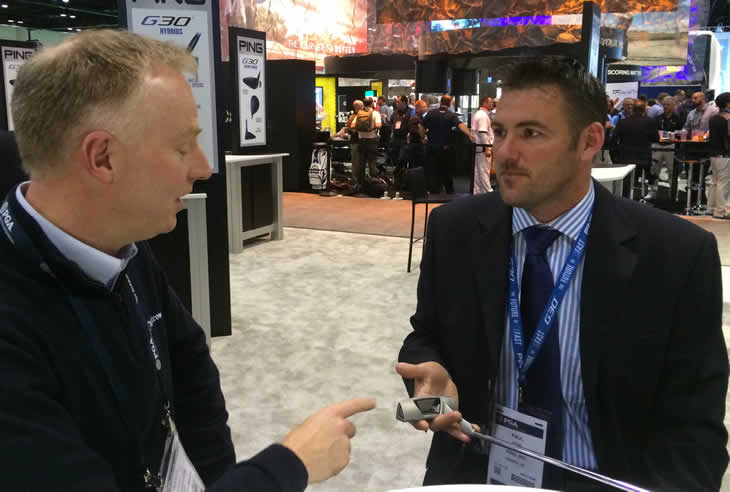
How long does it take to create a head like this putter from example?
We are really limited by the thickness of the layers and therefore how many layers it takes to make a club and the speed of the laser. Right now it is a little ponderous, in the order of around 24 hours. It is not something you watch continuously and see it grow. It is more something that you visit in intervals and are then able to see it has moved forward.
But, as lasers get quicker then that time will come down, but I can’t ever see it being a 10 second process as it has to build the product up over time.
How does that compare to the current process for a putter head given you have to fill the cast and then let it cool down?
The current process is more complicated than that because you have to go through making moulds and then go through the casting process, so although casting a product doesn’t take that long the whole process of creating a mould and taking that to casting is a more mass manufacturing method and you are talking about 6 weeks easily.
But once you have the mould how long is the actual process of casting?
The actual pouring of the metal is very quick, but the whole process takes longer with the products having to sit for a while whilst they are going through the slurry process, building the wax up, creating the layers of slurry and then burning out the waxes etc means there are a lot of steps in the process.
With 3D printing the process is actually very simple. CAD file, printer, finished product. There is a lot of work that goes into that, but the process itself is very straightforward.
You've started with the putter and you say you have printed the G25 iron. Is there anything else you have done?
Yes, it can do a hybrid and it can do a fairway wood and it can do a driver. There are certain elements of geometry that are harder than others.
For example hollow heads are doable, but they are more challenging and there are trade-off's, so finding the optimal way to do that is a big part of the R&D that we are working on.
Can you do shafts and grips as well?
The shape of the shaft may really not lend itself that well to a 3D printer, so the traditional way of making a shaft may be more sensible now, but in theory it could. As the machines get bigger maybe it will be an option in the future.
Taking My 3D to the nth degree, if you offered this with other clubs and somebody said, "well you offer a 9° and a 10.5° driver, but I want 9.9°", could you potentially do that?
We could do that. That is where the imagination comes in as this is a brand new technology and it is really about where can we take this. We want to be the first ones in, so it means we are the first ones thinking about this and leading the development of this technology. It’s exciting.
So how accurate is it? I mentioned a specific loft there and I know that currently there is a margin of error for manufacturing about half a degree either way. Can you get to that level at the moment?
There are always going to be margins, but with the 3D printer I am confident that we can get to an even better place than where we are now. The question is how far you need to take it, will you ever need to get to two decimal places in terms of loft, probably not, but certainly dialling it in as much as we can is always going to be important, especially to the elite players.
Could 3D printing eliminate the current issue where although a head says 10.5 degrees it could in reality be a degree or two either way, which does alter the playing characteristics of the club?
That is certainly where this technology could go. That remains to be proven – when we have made a couple of thousand products with this technology we will have a better idea of where we are, what sort of tolerances we can expect, but the ones we have produced so far look really promising from that perspective. In 2 or 3 years we will know a lot more about the reality of the technology in these areas.
More From Ping